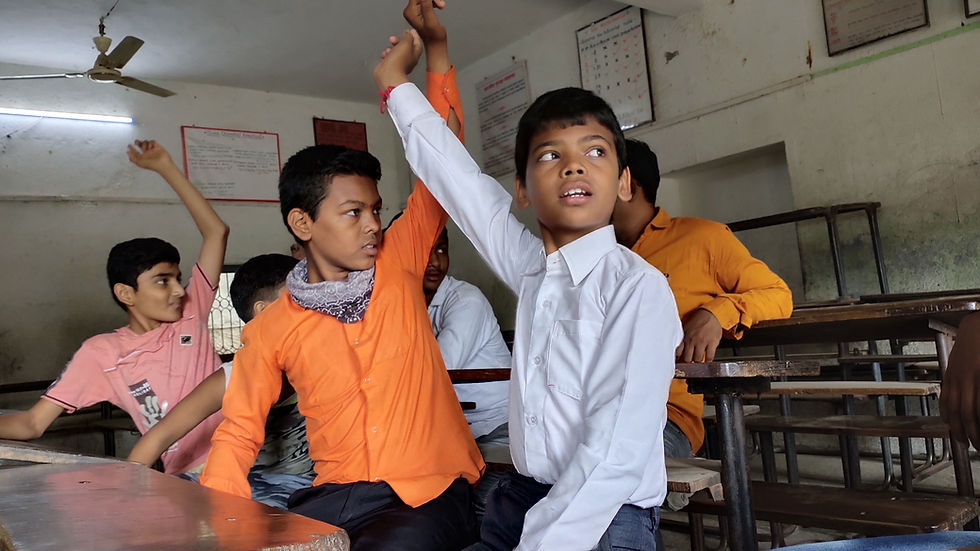Are smaller School and Class size better for students?: A Review of Global Evidence
- Anuraag Shukla

- May 12, 2020
- 3 min read
As many progressive reforms through the decades of the 60s and 70s allowed minorities and marginalized sections to access the existing school facilities, the average school size in the United States became large (Harvey, 1971). The rising demand for education, along with declining learning levels in schools, created the perception that the US was failing its students (A Nation At Risk, 1983). Policy-makers believed that it was because of large school-sizes, teachers were not able to teach, and students were not able to learn. The school-size reduction was the only way through which the American education system could be revamped. Since then, numerous studies have looked at the impact of school size reduction on the various aspects of schooling. Despite a large number of studies on the topic, the question of school size reduction has remained unsettled.

Informed by these debates in the western countries where the school-size reduction was thought as a solution to many shortcomings, policy-makers in India decided to rationalize the school resources by fixing teacher-student ratio to 30 for primary classes and 35 in upper primary classes. Explicit norms and standards for the establishment of a school were promulgated (pg. 13, RTE-2009). By having these provisions in RTE, the policy-makers believed that this would not only improve the overall teacher shortages in government schools but would also result in the absolute learning gains among the students studying the government schooling system. As the elementary education has become the fundamental right, various civil society organizations mounted on state governments to fill up the positions of teachers to maintain the teacher-student ratio mandated in the right to education (RTE) Act, passed in 2009. With an intent to provide free and compulsory education to the children in the age group of 6–14 years, the policy mandated that the state (or any appropriate authority as defined by the law) should provide a school within the one-kilometre periphery of a habitation. Since the policy focused on input-based measures, most of the investment made under Sarva Shiksha Abhiyaan (SSA) went into providing infrastructure for the school. While the expectation was that the increased access to schooling would not only improve enrolment in these schools but also impact the learning levels among these students, the outcomes on students’ achievement have been quite contradictory. The preference for private schools among the parents led to an absolute decrease in the number of students enrolled in government schools. Students’ achievement in the same period also remained flat, where only a quarter of students enrolled in grade 3rd could perform grade-appropriate tasks (ASER, 2018). The falling enrolment in the government schools, accompanied by static students’ outcomes led to a situation where many state governments started further rationalizing the resources (both the physical and human resources), manifested by various policy measures such as school consolidation, merger, etc. taken at the state level. Under these policies, state governments have sought to merge smaller schools (enrolment wise) to the nearest bigger schools.
The Review of Literature
There have been, over the years, numerous studies looking at school size and student achievements. During the debates over the report’ Nation at the Risk’, various researchers tried to look at the impact of school size on the students’ achievement in a US context. The first such study, using the data from 1021 New York State elementary schools, found that the school size had a negative correlation with reading and mathematics achievements, controlling for the socio-economic status (SES) of students (Wendling & Cohen, 1981). In the very next year, a survey study concluded that the schools with 100 students or less had a significant impact on the satisfaction, attendance, and other non-cognitive outcomes of students (Lindsay, 1982). This result was again contradicted by a study conducted among the 287 elementary schools, which found that the school-size had little or no impact on the performances of students (Eberts, Keyhole, & Stone, 1984). However, this study did not consider the locations of the schools. The efforts were also made to analyze the impact of school-size on the students’ drop-out rates (Pittman & Haughwout, 1987), though no direct link between these two variables could be established. However, results from a study by Toenjes (1989) showed school-size being a strong predictor in determining the drop-out risk.
Read the full article here




Comments